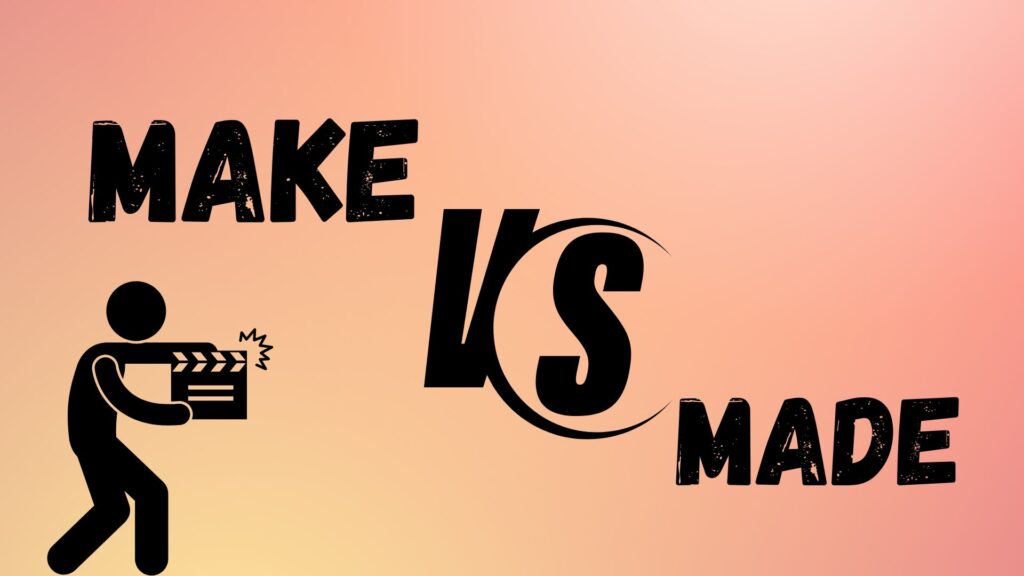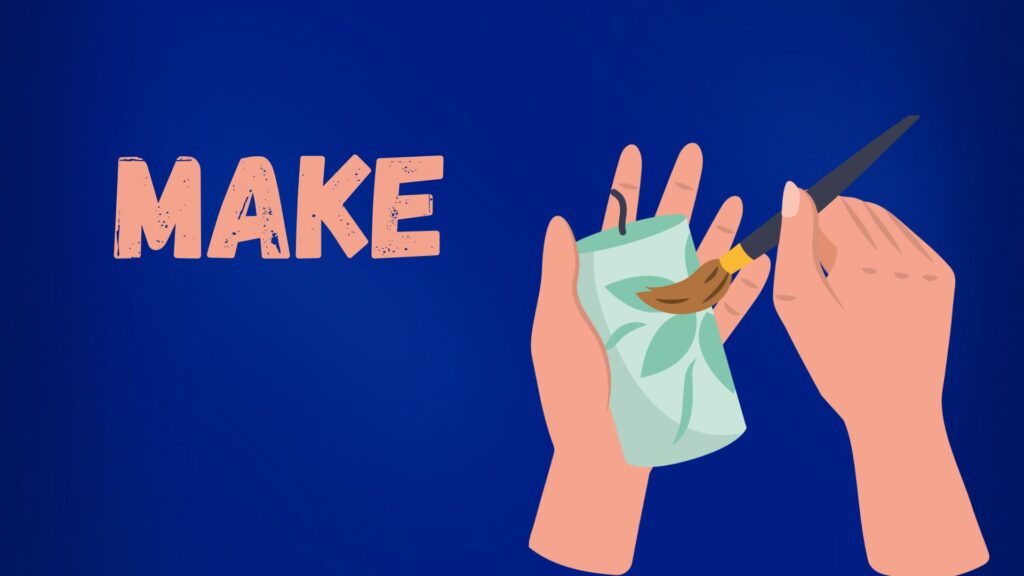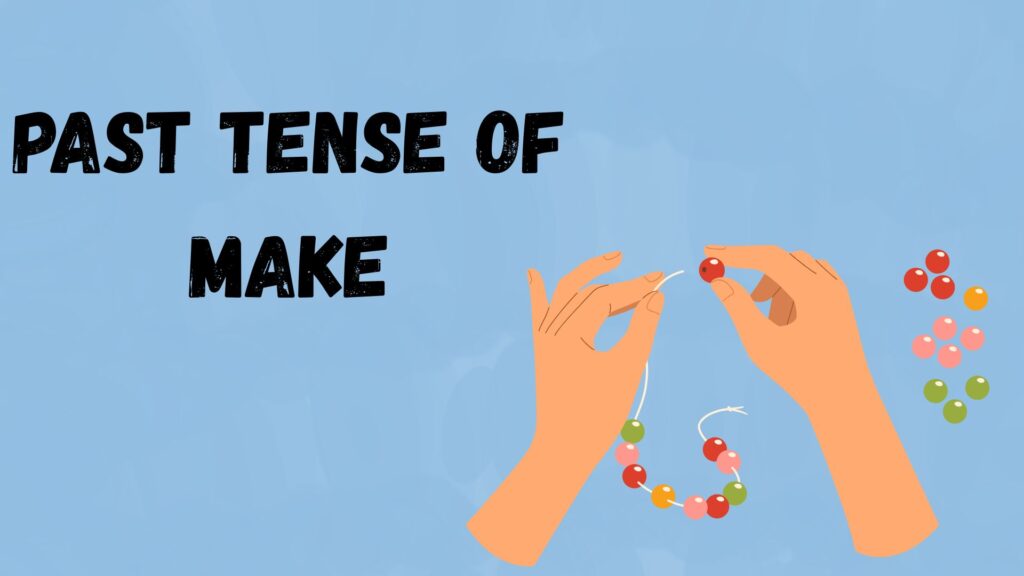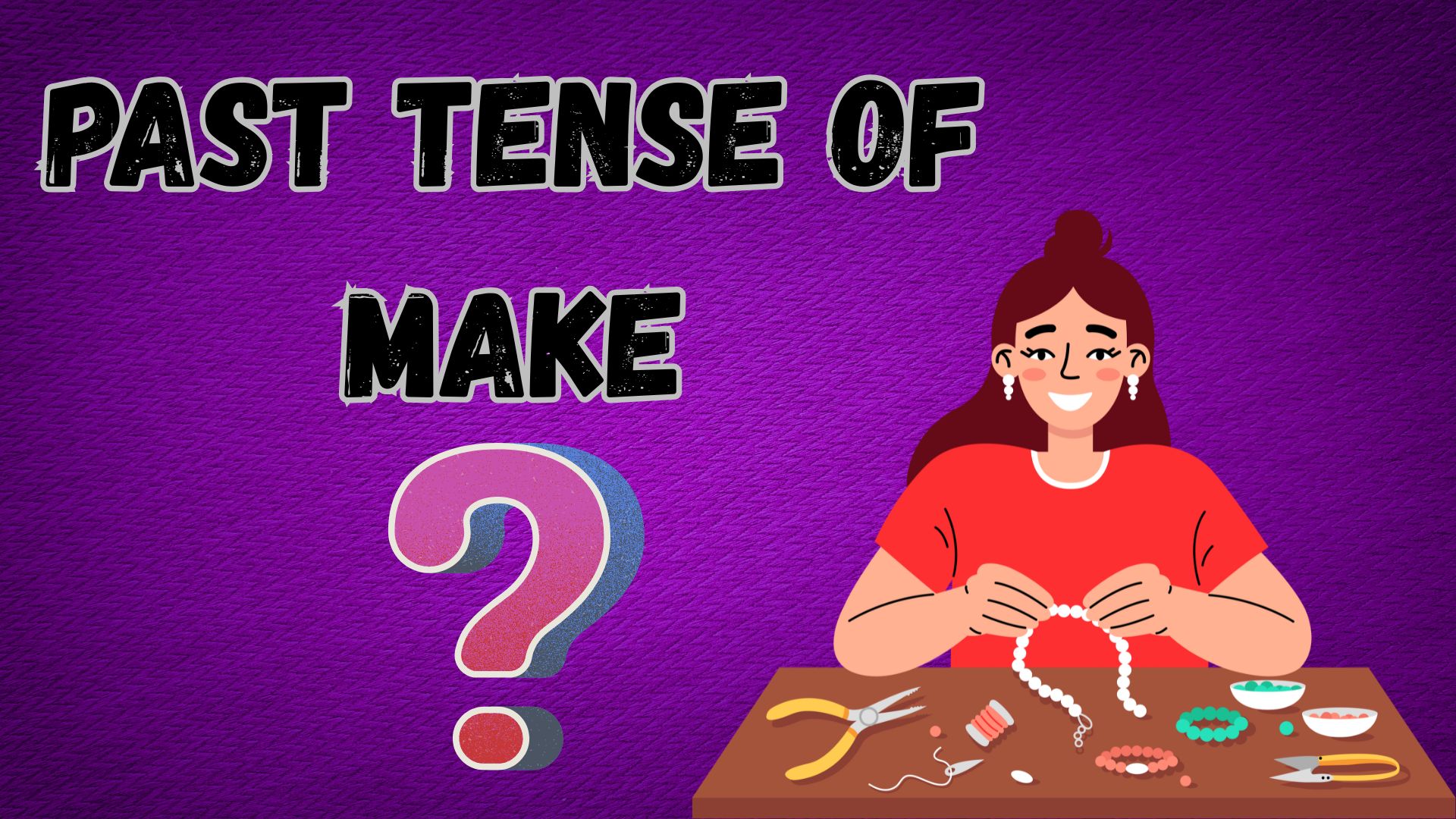Understanding the Verb “Make” in English Grammar
If you’ve ever hesitated before saying “I make” or “I made”, you’re not alone. English verbs, especially irregular verbs, can get tricky. And the verb make is one of the most commonly used and frequently misunderstood.
So, let’s answer the big question right away:
✅ The past tense of “make” is “made.”
Simple, right? But as with everything in English grammar, the deeper you go, the more interesting it gets. Let’s break it all down, see how it works in real-life situations, and learn how to avoid common mistakes.
Make vs Made: What’s the Difference?

Let’s look at the core distinction:
| Verb Form | Example Sentence |
|---|---|
| make (present) | I make coffee every morning. |
| made (past) | I made coffee an hour ago. |
- Make is the base form or present tense.
- Made is both the simple past and the past participle of make.
That means we use made not just for simple past, but also with perfect tenses like have made, had made, or will have made.
Examples of “Made” in Everyday Use
Let’s put it into context.
✉️ Example Email (Past Simple):
Subject: The Event Presentation
Hi Jason,
I just wanted to let you know that I made the final edits to the event presentation last night. Everything’s set for tomorrow’s review.
Let me know if you need anything else.
Best,
Elena
Here, made is used in the simple past tense. Elena completed the action yesterday. It’s over and done.
Verb Conjugation of “Make” Across Tenses

Let’s explore the verb conjugation of “make” across all major English tenses:
| Tense | Example |
|---|---|
| Present Simple | I make great pasta. |
| Past Simple | I made dinner last night. |
| Future Simple | I will make time for you tomorrow. |
| Present Continuous | I am making a cake right now. |
| Past Continuous | I was making tea when you called. |
| Future Continuous | I will be making the bed later. |
| Present Perfect | I have made a big decision. |
| Past Perfect | I had made plans before the meeting. |
| Future Perfect | By next week, I will have made my choice. |
| Present Perfect Continuous | I have been making progress. |
| Past Perfect Continuous | We had been making cookies for hours. |
| Future Perfect Continuous | He will have been making wine for 20 years. |
Each of these shows different aspects of time and completion. Note how the past participle “made” appears in all the perfect tenses.
Grammar Rule: Irregular Verb Alert
“Make” is an irregular verb, which means it doesn’t follow the standard -ed rule for past tense.
You don’t say:
❌ I maked a mistake.
The correct version is:
✅ I made a mistake.
If you’re building an English verb tense chart, always mark make/made/made as the base / past / past participle.
Common Mistakes and How to Fix Them
Let’s tackle a few grammar blunders that trip people up.
❌ He make a good point yesterday.
✅ He made a good point yesterday.❌ They have make a complaint.
✅ They have made a complaint.
The second sentence above illustrates a present perfect construction. The correct past participle is made, not make.
Remember, when using auxiliary verbs like have, had, or will have, you need the past participle and in this case, that’s made.
Passive Constructions with “Made”
Passive voice, while best used sparingly, still shows up a lot in formal writing or reports. Here’s how “made” fits into it.
✅ The decision was made by upper management.
✅ This dress was made in Italy.
In both cases, we’re using made in a passive structure: was/were + past participle. This shifts focus from the doer to the action itself.
Real-World Scenario Examples

🧁 Baking a Cake (Past Simple)
I made a chocolate cake for Mary’s birthday yesterday.
This is a simple action that took place in the past no auxiliary verb needed.
☕ Coffee Orders at Work (Present vs Past)
- Present: “I make the coffee every Monday morning.”
- Past: “I made coffee today because Tom forgot.”
Same action, different timeframes watch how the verb form shifts naturally.
🧠 In a Business Strategy Email (Present Perfect)
Subject: Client Milestone Achieved
Dear Clara,
I’m happy to report that we have made significant progress on the integration module. The dev team will send a preview by Friday.
Cheers,
Derek
Using have made here shows an action completed in the recent past with present relevance classic present perfect usage.
🍷 Winemaking (Future Perfect)
By 2030, our vineyard will have made over 10,000 bottles of wine.
This is future perfect tense used to describe an action that will be completed before a specific future time.
Tense Comparison: Make vs Made
Here’s a quick chart for side-by-side comparison:
| Use | Correct Tense | Example |
|---|---|---|
| Routine habit | Present simple | I make breakfast every day. |
| Completed past action | Simple past | I made breakfast this morning. |
| Emphasis on result | Present perfect | I have made a discovery. |
| Action before another past event | Past perfect | I had made a list before shopping. |
| Passive construction | Past participle | This report was made public. |
Pro Tips for ESL Learners and Grammar Enthusiasts
- Check your auxiliary verb: If you’re using have, had, or will have, your main verb needs to be in the past participle.
- Don’t confuse “make” with “do”: While both relate to creating or completing something, make often refers to creating something physical or abstract (like a plan, cake, or decision).
- Use tools like a tense chart or verb conjugator to reinforce your learning.
- Practice with real-world grammar examples and correct your grammar mistakes in writing.
Final Thoughts: Made to Make Sense
The verb make does a lot of heavy lifting in the English language. Whether you’re making coffee, have made a good impression, or will have made progress by next week, getting the tense right matters.
Just remember:
- Use make for the present.
- Use made for the past and perfect tenses.
- Watch your auxiliaries and keep practicing with real sentences.
Mastering these forms doesn’t just improve your grammar it makes your writing and speech sound natural, precise, and fluent.

